| September 19, 2021 1:00 AM
Admiral Isoroku Yamamoto was Japan’s top admiral during World War II and was the architect of the attack on Pearl Harbor.
He correctly believed aircraft carriers were the key to winning naval superiority in the Pacific and was confident the Imperial Japanese Navy could do the job.
Then things started to go wrong.
After Pearl Harbor, the Japanese Navy set its sights on taking New Guinea and Tulagi in the Solomon Islands — posing a direct threat to Australia.
Heading into the Coral Sea, the Japanese fleet under Shigeyoshi Inoue was surprised to suddenly be confronted by a U.S. naval force headed by Admiral Frank J. Fletcher that included aircraft carriers Lexington and Yorktown.
The Japanese were convinced they had numerical superiority over the Allied forces.
On May 4, 1942, the two navies clashed in the Coral Sea northeast of Australia and southwest of New Guinea. Carrier-based aircraft attacked each other’s ships but the ships were so far apart that they didn’t directly attack each other.
One American advantage was radar, enabling Navy planes to get closer to enemy ships before being detected. The Japanese only used lookouts.
Japanese aircraft damaged the Yorktown and the Lexington, which was later scuttled, while Yorktown limped back to Hawaii for repairs.
The repairs on the Yorktown took only two days, and it quickly rejoined the rest of the fleet preparing to face the Japanese again at Midway just days away.
The Japanese lost five ships, 97 aircraft and 966 men at the Coral Sea.
U.S. losses were five ships, 69 aircraft and 656 men.
Why was that battle an important prelude to Midway?
Before the war in the Pacific began, Midway with its naval air station and submarine base, 1,300 miles northwest of Oahu, was considered the second most important American base in the region after Pearl Harbor.
Midway was also a seaplane base, and the airstrip served as a forward staging point for B-17 bomber attacks to retake Wake Island that was lost to the Japanese on Dec. 23, 1941.
Also, in-between world wars, the U.S. Navy had been training for making long-range strikes with carrier-based planes, and the Coral Sea Battle was the first time the Navy had a chance to see if all the training would pay off against an enemy with roughly equivalent forces.
While Yamamoto was strategizing for the looming Midway confrontation, Admiral Chester W. Nimitz in Hawaii was readying his fleet to surprise the Japanese — who were confident that they could crush the U.S. Navy and take control of the Pacific, despite the fact that the Coral Sea battle ended when both sides sailing away, with the resulting losses and casualties about even.
The Allies however won the strategic battle, because it stopped Japan’s momentum in the southwest Pacific, forcing them to shelve their plan to invade New Guinea. Taking advantage of the lull in aggression by the Japanese, the U.S. Marines and Allies swarmed ashore on the beaches of Guadalcanal and neighboring islands.
The tide of war was beginning to turn in the Pacific.
Yamamoto’s attack plan for Midway was first to send a small diversionary fleet to attack the Aleutian Islands, hoping to draw away U.S. Naval ships, then launch an all-out air attack on Midway with aircraft launched from front-line carriers Akagi, Kaga, Hiryu and Soryu, commanded by Vice Admiral Chichi Nagumo.
Next, Admiral Yamamoto’s fleet waiting 600 miles to the west would follow up with ships and soldiers for a land invasion, commanded by Vice Admiral Nobutake Kondo.
The U.S. knew another attack was brewing. Because the Japanese fleet was so widely scattered, they could only communicate by radio — while American crypto experts listened.
The Japanese were chattering about an attack plan called “AF” that the Navy code-busters guessed was Midway. Sending a fake message reading, “At the present time we have only enough water for two weeks. Please supply us immediately” soon had the Japanese reporting that Midway was out of water.
That confirmed that the code name “AF” was indeed Midway.
The crypto team in Hawaii already knew the planned attack date and order of battle — information that Nimitz used to prepare defenses.
The Navy still didn’t know where the Japanese fleet was located, so it sent scouting planes out to find them.
Around 9 a.m. on June 3, 1941, U.S. Navy Ensign Jack H. Reid was piloting a Catalina PBY seaplane west of Midway Atoll. They knew from code-breakers that the Japanese fleet was lurking somewhere in that area.
Everyone on board was scouring the sea below with their binoculars.
Other PBYs were doing the same.
Suddenly, the clouds parted and Ensign Reid was stunned to see the Japanese fleet right below. The enemy fleet was 580 miles west-southwest of the atoll.
Immediately, he radioed the information.
Flight crews scrambled to their planes, and 15 B-17 Flying Fortresses took off from Sand Island in Midway loaded with bombs.
From high altitude, they dropped their bombs — but they all missed.
Eleven Marine SB2U dive bombers arrived minutes later and attacked the battleship Haruna. Again — no hits.
Early on the morning of June 4, Japanese planes from four aircraft carriers attacked Midway — while the American fleet waited to the east.
When the attack was over, the Japanese returned to their carriers to refuel and rearm.
While they were doing that, TBD Devastator torpedo-bombers and SBD Dauntless dive-bombers from the U.S. carriers Enterprise, Hornet and Yorktown swooped in on the Japanese fleet, but most were shot down by Mitsubishi Zeros.
Some got close enough to drop torpedoes but all of them missed, and the attack flopped.
Later however, another American attack succeeded in sinking carriers Akagi, Kaga and Soryu, leaving the Hiryu as the only surviving Japanese carrier. Planes from the Hiryu then bombed the Yorktown, causing severe damage and loss of life.
That same day, the Hiryu was attacked by dive-bombers from the Enterprise that left the carrier burning and unable to launch aircraft before it finally sank.
Three days later, Japanese submarine I-168 fired four torpedoes at the Yorktown and also the destroyer USS Hammann, sending both ships to their doom.
The Hammann that was protecting the disabled carrier Yorktown during repair operations, sank in minutes. The Yorktown eventually capsized and sank the following day.
On June 6, Yamamoto ordered his ships to retreat.
The Battle of Midway was over, and Japan’s hopes for neutralizing the U.S. in the Pacific were shattered.
America lost 317 lives, two ships and 145 aircraft, but it was an incredible victory for America.
It was the first time in history than a naval battle was won in the air.
From that battle on, the fortunes of war tuned against Japan. More and more ships and planes were being lost and they were running out of pilots. Morale plummeted as the Allies closed in on the Japanese mainland.
Thirteen months after the Battle of Midway, Yamamoto was headquartered in Rabaul in the Solomons and decided to inspect Japanese installations in the Solomons and New Guinea, hoping to boost morale after the disastrous Guadalcanal Campaign and withdrawal.
U.S. Navy decoders picked up a radio communication describing Yamamoto’s itinerary.
His staff urged him not to go.
A search flight of 18 P-38G Lightning fighters was organized to shoot him down.
Each plane was armed with a 20mm cannon and four 50-caiber machine guns. Because of the estimated 1,000-mile roundtrip flight distance, the planes carried extra fuel tanks. Two planes aborted because of maintenance problems.
They found the twin-engine Betty bomber Yamamoto was riding in over Bougainville, accompanied by another Betty and two escort fighter planes.
U.S., Army Air Corps Lieutenant Rex T. Barber and Captain Thomas G. Lamphier Jr. both claimed shooting him down — the “Who killed Yamamoto” question is still a controversy.
Most credit Rex Barber.
Barber also downed the other Betty, hitting one of the engines. The crippled bomber crash-landed in the water and all three aboard were rescued.
The Japanese consider Admiral Yamamoto a hero. At first, he supported war with the U.S., but said that if the battle lasted more than a year, Japan would lose.
After Pearl Harbor, he famously said, “I fear all we have done is to awaken a sleeping giant and fill him with a terrible resolve.”
He was right.
• • •
Contact Syd Albright at silverflix@roadrunner.com.
• • •
PanAm days on Midway…
In 1935, Pan American World Airways built a refueling stop at Midway for its luxurious clipper seaplane service linking its San Francisco base on Treasure Island with Honolulu Midway, Wake Island, Guam, Manila and Macau. The stopover was closed after the Pearl Harbor attack and never reopened — except for one flight in 1947. The clipper days were over.
What is Midway?
Midway is not an island, it’s an atoll with Sand Island — the main one with an airfield and housing. Eastern Island is uninhabited, and surrounding them to form a lagoon is an incomplete coral reef called Spit Island — the atoll being the western part of the Hawaiian Archipelago. It’s an unincorporated U.S. Territory, and not part of the State of Hawaii. The atoll is controlled by the U.S. Fish and Wildlife Service (FWS). It’s also part of the larger Papahānaumokuākea Marine National Monument, named after the goddess Earth Mother in Hawaiian mythology. (Remember the name.)
Battle of Midway aftermath…
News of the Japanese Navy defeat at Midway was hidden from the Japanese people. Only Emperor Hirohito and top Navy brass knew how devastating the battle was. They didn’t even tell the Army.
Admiral Nimitz after the war…
When the articles of surrender with Japan was signed aboard the USS Missouri in Tokyo Bay ending World War II, Admiral Chester W. Nimitz signed on behalf of the U.S. After the war, he supported Captain Hyman G. Rickover’s proposal for submarines to go nuclear, resulting in the USS Nautilus — America’s first nuclear-powered submarine.
Wreck of USS Yorktown found…
In 1998, Robert Ballard who found the Titanic, found the carrier USS Yorktown, that was sunk by the Japanese in the Battle of Midway in waters three miles deep near Midway. By federal law, nothing is allowed to be removed from U.S. Navy shipwrecks.
https://cdapress.com/news/2021/sep/19/history-corner-battle-midway-1942/





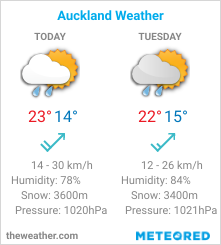
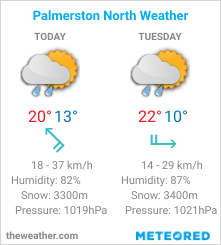
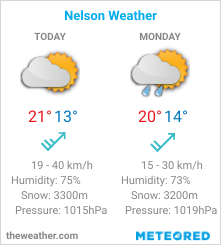
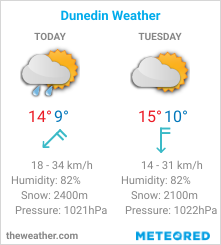
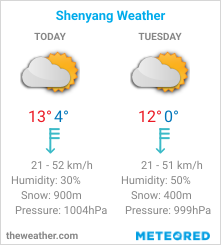
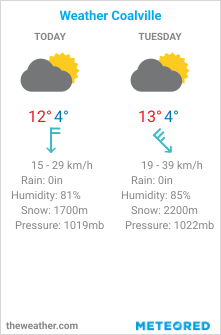
No comments:
Post a Comment
How did you like the post, leave a comment. I would appreciate hearing from you all. Best wishes from JC's Naval, Maritime and Military News